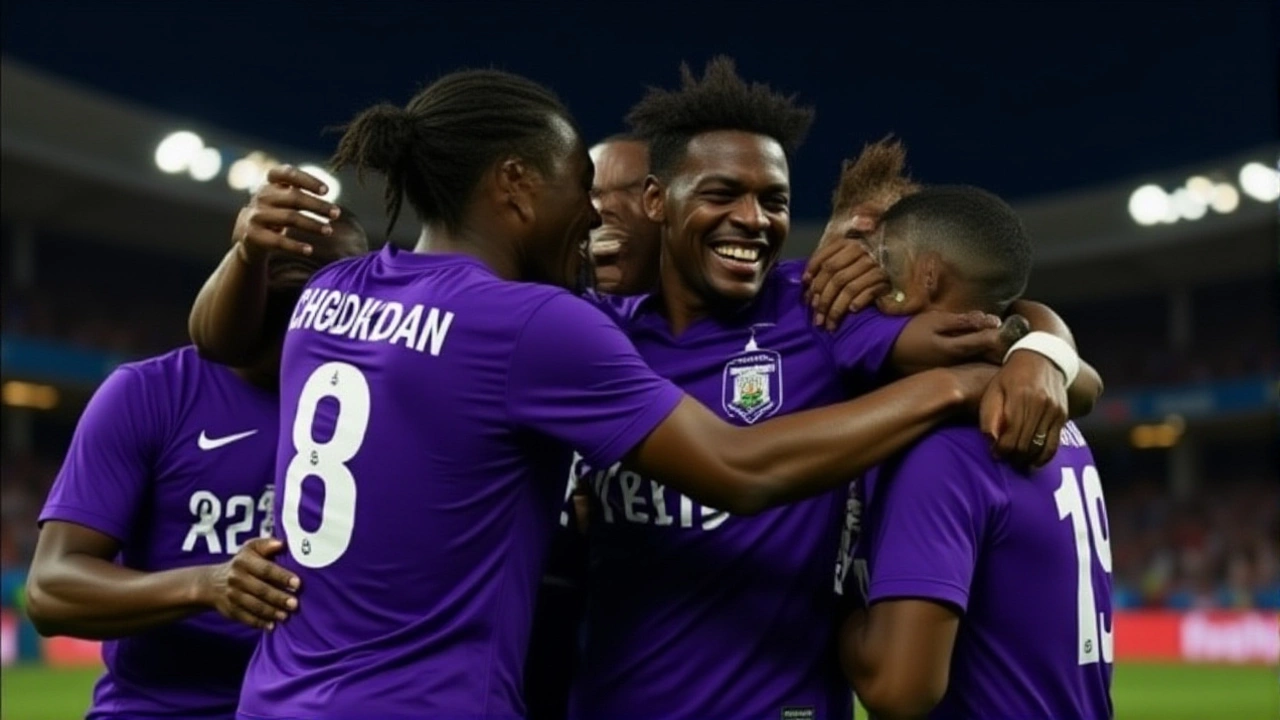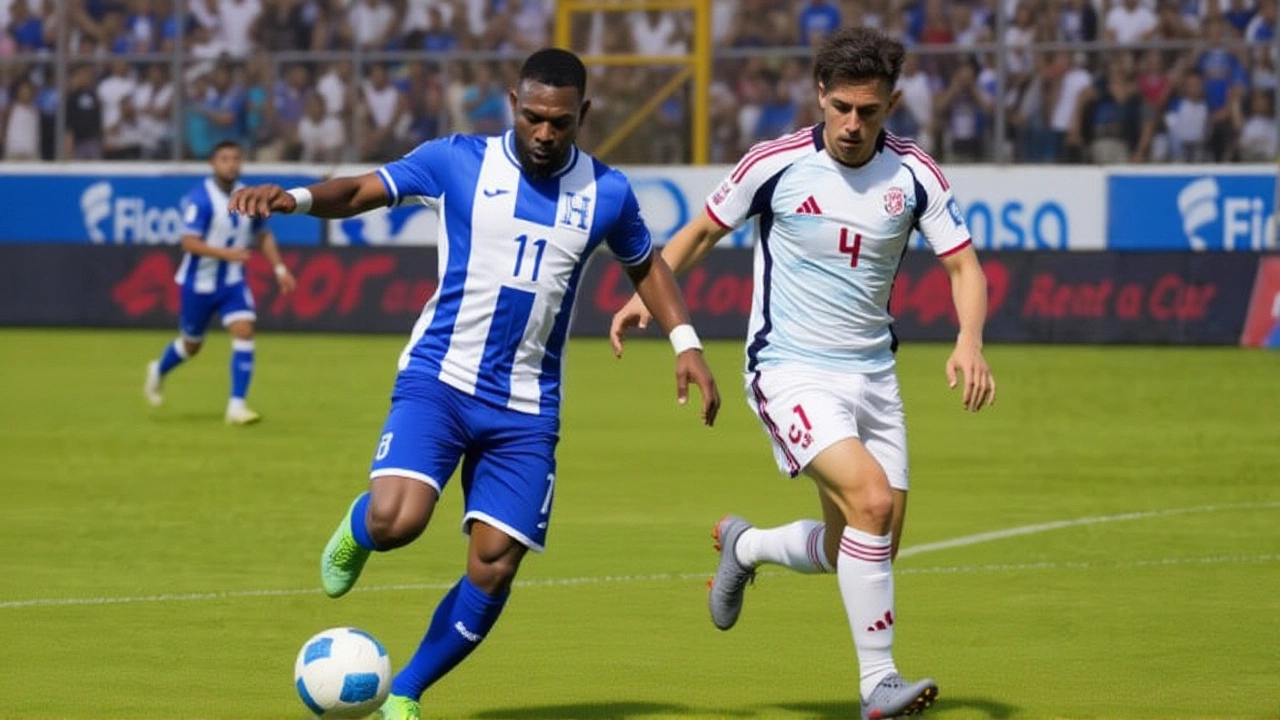The final whistle blew at the CONCACAF Third Round finale on October 9, 2025, and with it, the World Cup dreams of two Central American giants faded into silence. Honduras and Costa Rica played out a tense, goalless 0-0 draw — a result that felt more like a funeral than a football match. Neither side managed to score, but both lost something far greater: a direct path to the 2026 FIFA World Cup. Instead, it was Haiti — the group’s surprise powerhouse — who punched their ticket to North America with an 11-point haul after a 2-0 win over Nicaragua on the same day. For Honduras and Costa Rica, the silence after the final whistle was deafening.
Heartbreak in Central America
This wasn’t just another qualifier. It was The Classico Centro Americano — a rivalry steeped in regional pride, decades of World Cup memories, and the quiet desperation of two nations who once punched above their weight on the global stage. Honduras entered the match with 9 points from six games: two wins, three draws, one loss. Costa Rica sat at 7, with just one win to their name in this round. Both knew they needed a victory to even dream of a playoff spot. But when the final whistle blew, neither had moved. The math had been brutal all along: only the group winner got automatic qualification. Second place? Maybe a playoff. But the odds were long, and the stakes were higher than any scoreboard could show.At the heart of it all was emotion. Honduras’ defender Yustin Arboleda, who received a last-minute yellow card at 90'+4 for a reckless foul, was one of many players whose body language told the whole story — slumped shoulders, staring at the turf, hands on hips. In goal, Luis Crisanto made two critical saves in the 65th and 78th minutes, but even his heroics couldn’t spark offense. For Costa Rica, veteran Keylor Navas — now 38, his World Cup window closing — was a fortress between the posts. He didn’t have to make many saves, but when he did, they mattered. Forward Joel Campbell had the best chance of the night — a looping header that Crisanto somehow tipped over the bar — but the ball never found the net.
What Went Wrong?
The numbers don’t lie. Honduras had won their first two matches in the final round — a 2-0 thrashing of Nicaragua on September 5 and a 1-0 upset over Costa Rica on September 10. But then came the slip: a 1-1 draw with Haiti on September 10, followed by a 1-0 loss to Haiti in San Pedro Sula on October 7. Momentum vanished. Costa Rica, meanwhile, had lost their first three matches — including that 1-0 defeat to Honduras — and never recovered. Their only point came from a 0-0 draw with Nicaragua on October 7. They entered this final match needing a win and hoping Haiti would drop points. Haiti didn’t. They won. And just like that, the group was decided.There were moments. A deflected shot from Marlon Ramirez in the 32nd minute that rattled the crossbar. A free kick from Costa Rica at 552 seconds — nearly 10 minutes in — that flew over the wall and into the arms of Crisanto. A missed header by Honduras’ Antony Quioto in the 81st minute, just inches wide. But no goals. No drama. Just the slow, crushing weight of inevitability.
Who Moves On?
Haiti’s rise was one of the most compelling stories of this qualifying cycle. With just three wins, two draws, and one loss, they finished with 11 points and a +3 goal difference — edging out Honduras on goal difference despite identical records. Their 2-0 win over Nicaragua sealed it. For the Caribbean nation, this is historic: their first World Cup appearance since 1974. The team’s captain, Kervens Belfort, who scored one of the goals, later said, “This isn’t just for us. It’s for every kid in Port-au-Prince who plays with a ball made of rags.”As for Honduras? Their second-place finish leaves them on the edge of a playoff berth. CONCACAF’s rules state that the two best second-place teams from the three groups advance to an intercontinental playoff. But here’s the twist: only the top two in each group are eligible. That means Honduras must hope one of the other second-place teams — likely the United States or Mexico — finishes with fewer points. It’s possible. But unlikely. And even if they qualify, the playoff would mean another high-pressure match, possibly against an Asian or South American side, in November. For a team that’s already endured a brutal qualifying campaign, it’s a brutal second chance.

The Bigger Picture
This outcome underscores a troubling trend: the erosion of traditional Central American powerhouses. Costa Rica, once World Cup quarterfinalists in 2014, now struggles to stay competitive. Honduras hasn’t qualified since 2014. Meanwhile, nations like Jamaica, Panama, and now Haiti are rising. The region’s football landscape is shifting — faster than many expected.The 2026 World Cup, hosted jointly by the United States, Canada, and Mexico, will feature 48 teams — and CONCACAF gets six spots: three direct, two playoffs, and one automatic for the host nations. But the real story isn’t the slots. It’s the emotional toll. The players who trained for years, the fans who saved for tickets, the coaches who bet their careers on this cycle — all now staring at a future without the world’s biggest stage.
What’s Next?
The CONCACAF playoff draw is scheduled for November 20, 2025. Honduras will watch nervously as the standings are finalized. If they qualify, they’ll face a team from Asia, Africa, or South America in a single-leg match — likely in Qatar or Saudi Arabia. But even if they don’t, the real work begins now: rebuilding. Youth development. Coaching overhauls. Financial reforms. The same questions haunt both Honduras and Costa Rica: How did we get here? And how do we get back?For now, the field is quiet. The jerseys are packed. The dreams are deferred. But in Central America, football never dies. It just waits.
Frequently Asked Questions
Did Honduras qualify for the 2026 World Cup?
No, Honduras did not qualify directly. They finished second in Group C with 9 points, which leaves them in contention for an intercontinental playoff berth — but only if they’re among the two best second-place teams across all three CONCACAF groups. Their fate depends on the final standings of the United States and Mexico, and the playoff draw won’t happen until November 20, 2025.
Why did Haiti qualify for the World Cup?
Haiti won Group C with 11 points (3 wins, 2 draws, 1 loss), finishing ahead of Honduras on goal difference (+3 vs. +3, but Haiti had more wins). Their 2-0 victory over Nicaragua on October 9, 2025, sealed the group title. This is Haiti’s first World Cup appearance since 1974, marking a historic breakthrough for Caribbean football.
What role did Keylor Navas play in the match?
Keylor Navas, at 38, was Costa Rica’s rock in goal. He made three key saves, including a diving stop on a header from Joel Campbell in the 70th minute. Though he didn’t face heavy pressure, his calm presence and leadership were vital. This was likely his final World Cup qualifying match — and his last chance to reach the tournament he’s helped carry for over a decade.
How does the CONCACAF playoff system work for 2026?
The top three teams in each of the three CONCACAF groups qualify directly. The two best second-place teams advance to a playoff round, where they’ll face teams from other confederations (likely Asia or South America) in single-leg matches. The winners earn one of the final two World Cup spots. The draw for these playoffs is set for November 20, 2025.
Why was this match called 'The Classico Centro Americano'?
It’s the fiercest rivalry in Central American football. Honduras and Costa Rica have met 48 times in official matches, with Costa Rica holding a slight edge. Both nations have rich World Cup histories — Costa Rica in 1990, 2002, 2006, 2014, 2018; Honduras in 1982, 2010, 2014. This was their last meeting in qualifying, making it a symbolic end to an era.
What’s the significance of Haiti’s qualification?
Haiti’s qualification is historic. They last appeared in the World Cup in 1974, and since then, they’ve been plagued by political instability, underfunding, and poor infrastructure. Their rise — led by players like Kervens Belfort and Jean-Jacques Pierre — shows how talent can overcome adversity. It’s a beacon for smaller nations and a reminder that World Cup dreams aren’t limited to traditional powers.


